Dog teeth are the most crucial part of the mouth and digestive system. Healthy dog teeth are essential for a healthy dog. Many digestive and infectious diseases of the dog arise from bad dog teeth. You must keep clean your dog’s teeth daily. Regular brushing and caring of dog teeth stay healthy, disease-free, bright looking, and attractive.
Dental Care For Your Dog
Periodontal Disease and inflammation of the gingivae are common disorders in your dogs. At three, more than 80% of your dogs show signs of periodontal disease. Gingivitis in dogs is caused by the formation and persistence of dental plaque on the surface of the teeth. If dental diseases are untreated, this can progress to periodontal disease, which affects the gingivae, periodontal ligament, cementum, and alveolar bone. Periodontal disease is associated with:
- Oral pain.
- Ulceration of mouth.
- Malodorous breath.
- The loss of alveolar bone and teeth.
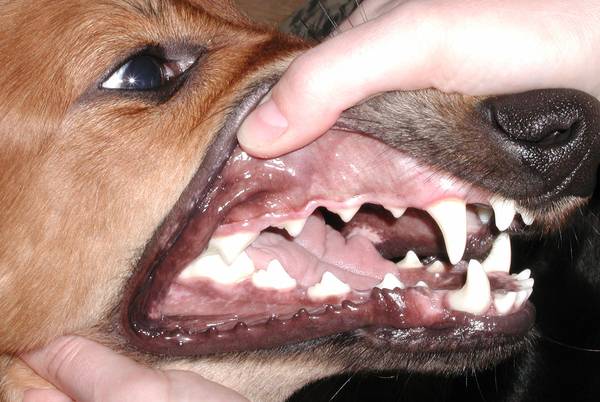
Incidence and Description of Bad Teeth
Dental health problems differ somewhat from those typically seen in humans. Because of the sharply inclined planes of their dentition, your dogs are not susceptible to the formation of tooth caries. In dogs, demineralizing teeth are not common because of the alkaline nature of their saliva.
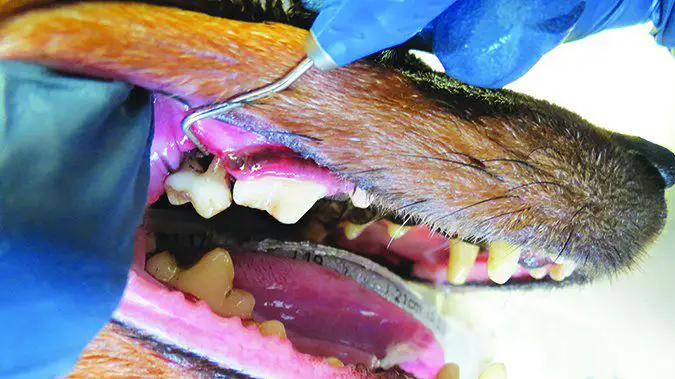
For example, gingival inflammation and heavy calculus deposits were found in 95% of research colony dogs, two years old or older, in a study conducted more than 40 years ago. Another early study reported moderate to severe periodontal disease in 75% of necropsied pet dogs between 4 and 8 years ago. Recent survey studies of dogs living in different areas of the world consistently report prevalence rates of periodontal disease of 60% to 80%.
Bad Teeth in Dogs
The three primary dental problems that are seen in your dogs are-
- Oral malodor.
- Gingivitis.
- Periodontitis.
Periodontal Disease
Periodontal disease in dogs is one of the most common diseases observed by your veterinarian. It is strongly associated with increasing age in your dogs. Survey studies of dogs consistently report prevalence rates of periodontal disease of 60% to 80%. Risk increases as pets age, and small and toy breeds of dogs are more severely affected than larger breeds.

It is a plaque-induced, progressive inflammatory disease affecting the gingiva, periodontal ligaments, and alveolar bone. The condition causes discomfort and pain and, if left untreated, can lead to bacteremia.
Gingivitis in Dogs
Gingivitis is a nonspecific term referring to inflammation of the gingivae. It is considered the reversible stage of periodontal disease and can be prevented by regular plaque removal and control; when a clean tooth surface is exposed to saliva and gingival fluids, a pellicle, composed of a thin layer of proteins and glycoproteins, forms within minutes. Oral debris and plaque-forming bacteria, which are part of the normal oral flora, rapidly adhere to the pellicle and begin to increase.
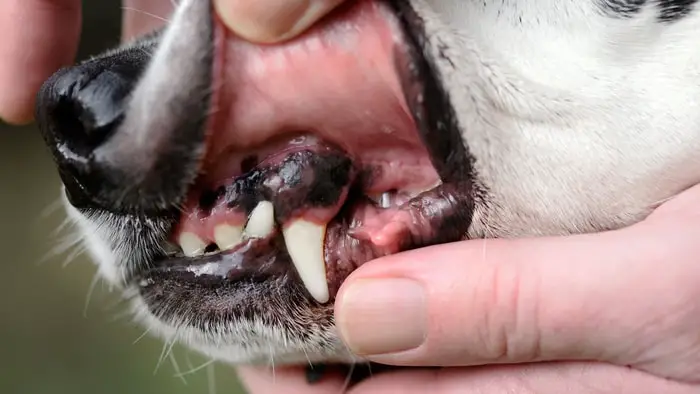
Oral Malodor in Dogs
Oral malodor is commonly reported in your dogs and is perceived by you to be a significant problem. Malodor is considered a precursor or manifestation of more serious dental disease and is often the first clinical sign you must report to your veterinarian. Breath malodor is consistently associated with gingivitis and periodontitis.
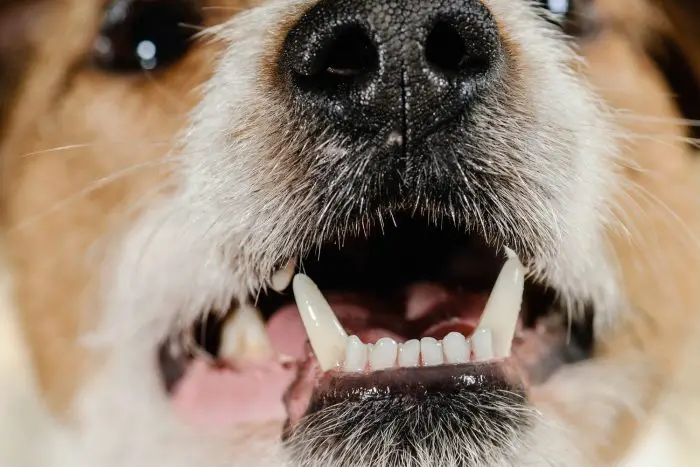
Role of Diet in the Development of Dog Dental Health Disease
The most crucial factor that influences the development of gingivitis and periodontal disease in your dogs is the presence and persistence of undisturbed plaque on the tooth surface. Therefore management and feeding practices that minimize plaque and calculus formation or aid in their removal are essential in preventing periodontal disease.

Factors Affecting Healthy Dog Teeth
- The frequency of brushing dog teeth.
- The type of diet that is fed.
- Whether or not table scraps or non-commercial foods are fed.
- The frequency of access to chew toys.
- Dental chews.
- Biscuits.
Types of Food: Dry Versus Wet
The exclusive feeding of wet food or a soft home-prepared diet is less effective at providing the needed mechanical abrasion of chewing to help remove dental plaque than feeding dry food. However, the mechanical abrasion from consuming everyday dry pet food can not effectively prevent the development of gingivitis and periodontal disease in your dogs.
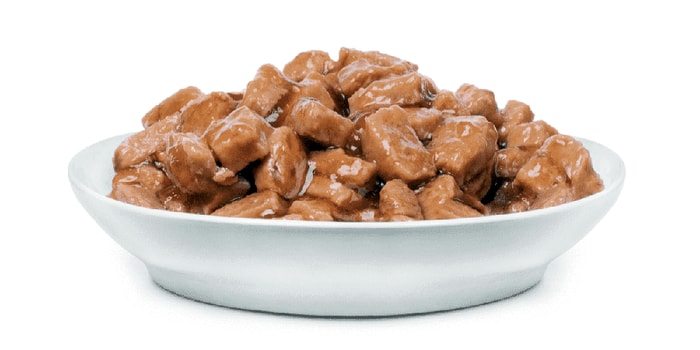
Opportunities for Chewing
Your dogs can be offered regular opportunities for chewing by feeding a portion of dry food and providing daily chew bones and dental chews. Various forms and types of dental chews should be selected for the best results. However, while these activities can help reduce plaque, calculus, and gingivitis, they will not wholly prevent plaque formation in most dogs.
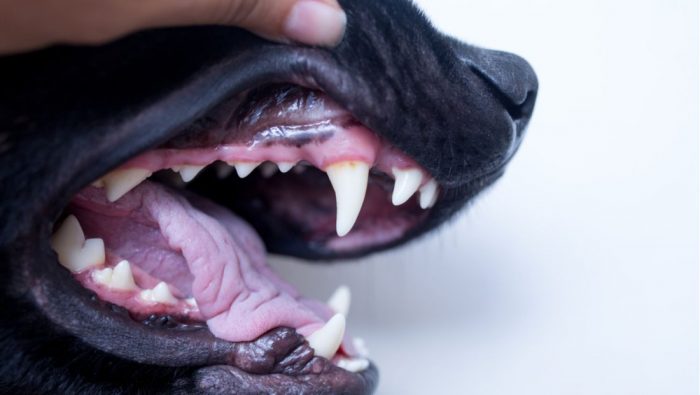
Healthy Dog Teeth: Dental Diets and Biscuits
It is generally accepted that plaque and gingivitis development can be somewhat reduced by feeding dry foods and providing frequent chewing opportunities. The primary mechanism of action has been the mechanical friction and scraping on the surface of the teeth as the animal consumes the kibble or chews on the toy. In recent years, specific ‘dental diets’ have been formulated to expand these effects by modifying the kibble pieces’ texture, shape, and size.
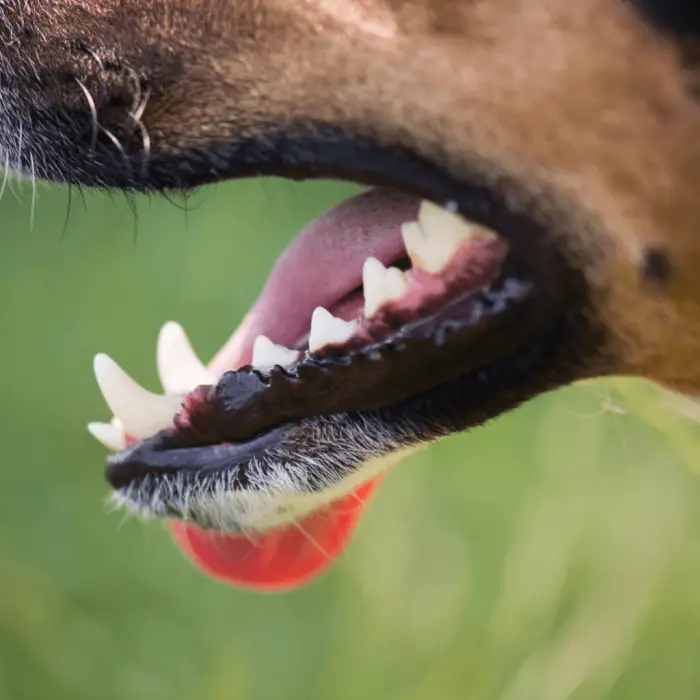
Food Texture, Kibble Size, and Shape
Food texture and kibble characteristics can affect the oral environment by controlling dental plaque and presumably reducing the risk of developing periodontal disease. Factors that are believed to be necessary include-
- The size, shape, and density of the food’s pieces.
- The food’s moisture level.
- The modification of certain nutrients, such as dietary fiber.
Healthy Dog Teeth: Polyphosphates
Including polyphosphates such as hexametaphosphate in dental diets or biscuits can promote dental health by reducing calculus formation. These compounds work by sequestering salivary calcium, making it unavailable for precipitation as dental calculus.
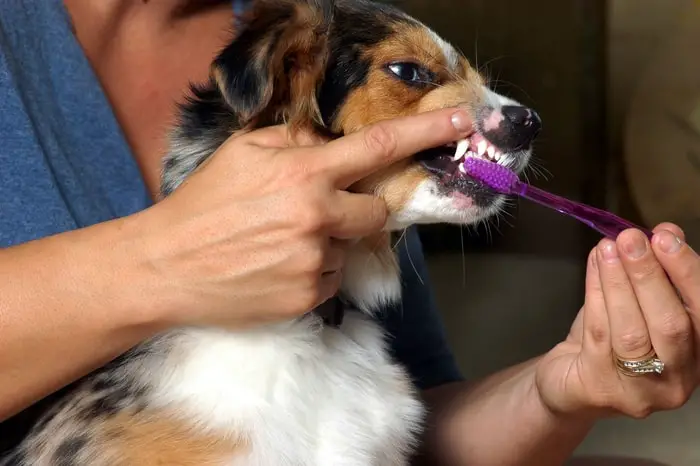
Prevention of Dental Disease to Maintain Healthy Dog Teeth
Lifelong dental care for your dogs should include regular veterinary examinations and cleaning that is scaling and polishing. Consistent home dental care such as brushing, ideally daily, and providing a variety of chew toys and hard biscuits to dogs who enjoy them. Although it cannot replace regular dental care, feeding and oral care pet food contribute to healthy gums and teeth.
Practical Tips on Healthy Dog Teeth
- Regular veterinary dental examinations and scaling and polishing prevention should be scheduled.
- To maintain home dental care, you should include regular tooth brushing, ideally every day, a minimum of two to three times per week.
- A pet dental solution or toothpaste containing chlorhexidine should be applied to your dogs topically or used during toothbrushing.
- Hard biscuits and chewing materials such as hard bones, rawhides, and rope toys should be provided to your dogs that enjoy them.
- Dry pet food should be fed as your dog’s primary diet.